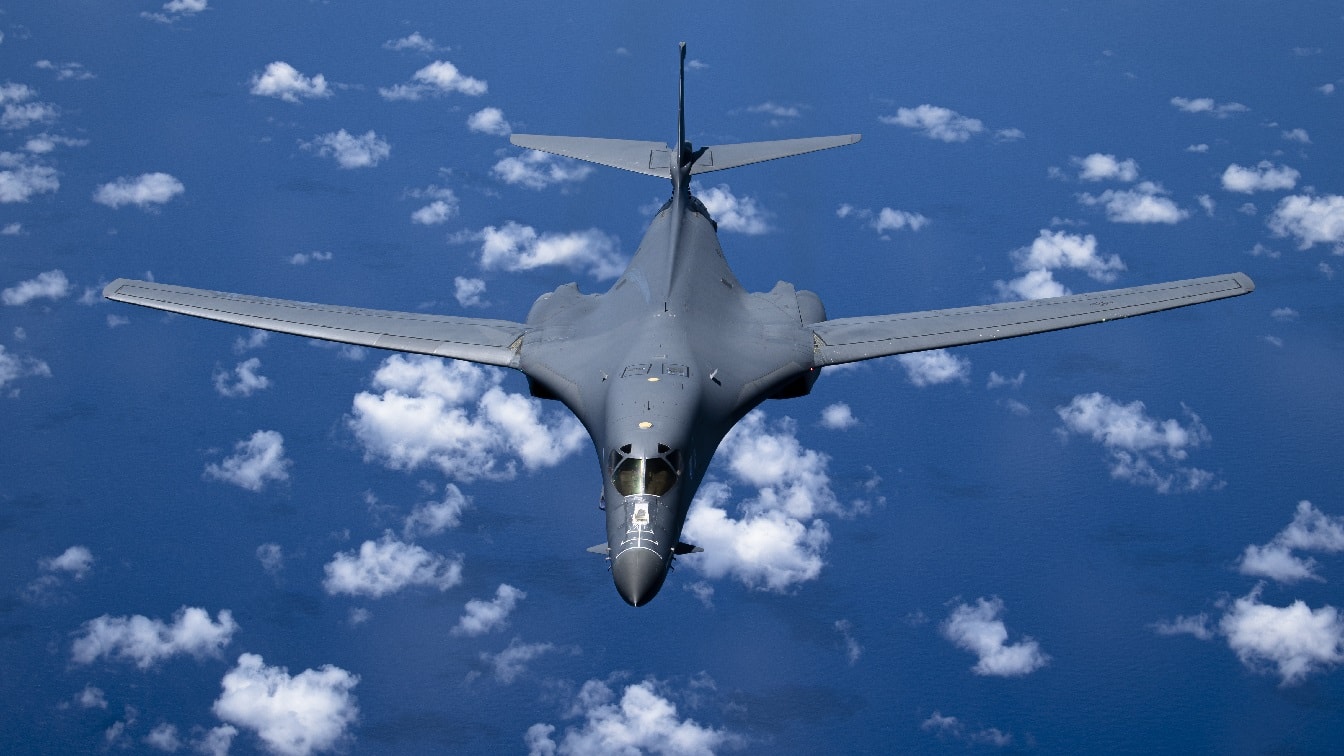The U.S. Air Force’s inventory of B-1B Lancer bombers is limping into the sunset due to age. Congress overrode former President Donald Trump’s veto of the 2021 National Defense Authorization Act (NDAA) in late December 2020.
The 2021 NDAA gave the Air Force authorization to cut the B-1B fleet from 62 to 45 out of the 104 that were built. The B-1B airframes have suffered from stress fractures and have lagged when it comes to maintenance. The aircraft has been in service for close to 40 years, having entered service in 1984. The last B-1B entered service in 1988. Air Force officials note that the B-1B has more wear and tear on it compared with the rest of the bomber fleet.
The B-1B’s Problematic Maintenance History
The B-1B has had a problematic maintenance history throughout its history. A General Accounting Office (GAO) report from 1988 noted that the Air Force had problems working with the contractor, Boeing, to get the planes ready to become operational. It took another decade before the B-1B conducted its first bombing operation as part of Operation Desert Fox, Bill Clinton’s bombing operation over Iraq in 1998.
It became the workhorse of the fleet over Iraq and Afghanistan as a high-speed close air support platform. They flew long distances from bases in Oman, Diego Garcia, Qatar, and other forward operating locations. Their loiter time, large payload, and ability to perform show-of-force flybys made them into an unmatched air-support arsenal. It’s analogous to driving a car that’s supposed to only be driven for 100,000 miles over 300,000 miles in a shorter time period.
“However, the aircraft was designed as a strategic penetrator, flying low and fast, with wings swept back. Flying with the wings extended for long periods, while carrying heavy loads, put years of heavy extra stress on the swing mechanism and attach points,” Air & Space Forces Magazine noted.
B-1Bs were designed to serve 8,000-10,000 hours or about 30 years. By the time the last B-1B leaves service, it will have been in the inventory for over 40 years.
The Air Force plans to do what it can to keep the remaining B-1Bs in service until the B-21s become operational around 2031.
“We’re keeping the fleet safe until the B-21 shows up,” Brig. Gen. William Rogers told Air & Space Forces Magazine. “… We can keep that plane flying. It is just hard work.”
Bombers Impeded From Primary Mission
Planners intended the B-1B to replace the B-52, which ironically will serve decades past the B-1B’s retirement, alongside the B-21. It was intended to fly low and under the radar to hit Soviet targets. It was intended as an interim stopgap until the B-2 stealth bombers became available.
Only six of the then remaining 62 B-1Bs were mission-capable in August 2019.
Starting in 2020, the Air Force began reducing the time of its missions and limiting them to short-duration missions in Europe, the Pacific, and the Middle East. All planes were grounded in 2021 after a massive hole was found in the filter housing of the F101-GE-102 engines on one of the B-1Bs.
“At length, we’ve documented the various stand-downs, overhauls, and upgrades the B-1 fleet has needed to make it to its eventual replacement by the B-21,” The War Zone reported in 2021.
“… [R]estrictions have been placed on the oft-ailing B-1’s operations, including on the aircraft’s once-prominent low-level flying capabilities, in an effort to preserve the fleet, 17 of which are now being retired as a result of that same initiative. As it sits now, just 45 examples will remain in service until the type’s retirement in the 2030s.”
The Air Force has another decade to keep the plane in service; consequently, it will be forced to do what it can to hobble the jets into retirement.
John Rossomando is a defense and counterterrorism analyst and served as Senior Analyst for Counterterrorism at The Investigative Project on Terrorism for eight years. His work has been featured in numerous publications such as The American Thinker, The National Interest, National Review Online, Daily Wire, Red Alert Politics, CNSNews.com, The Daily Caller, Human Events, Newsmax, The American Spectator, TownHall.com, and Crisis Magazine. He also served as senior managing editor of The Bulletin, a 100,000-circulation daily newspaper in Philadelphia, and received the Pennsylvania Associated Press Managing Editors first-place award for his reporting.

